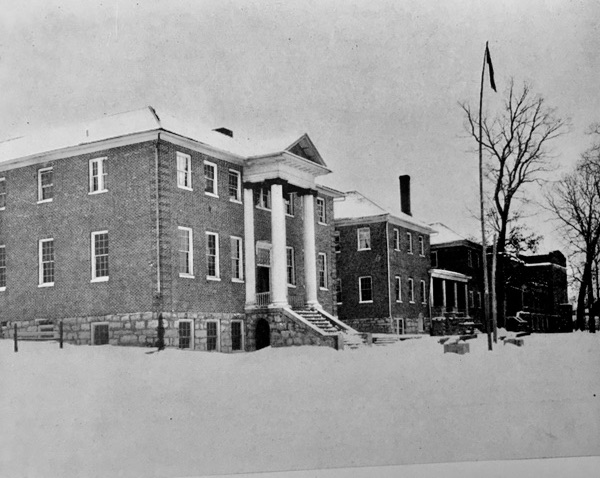Lewisburg’s town council, in 1899, met and “determined that it would no longer employ a public scavenger, but that owners or occupyers (sic) of houses would be required, at their own expense, to keep their premises and outhouses clean in the interest of public health.” Until the 20th century, Lewisburg homes had outdoor toilets commonly called outhouses. The term “public scavenger” was likely carried over from London, England, where it was used for workers who cleaned filth from the city. London’s poor became the scavenging class. The term is still used today In India for sanitation workers who clean privies and sewer systems. These workers come from the lowest caste rung – the poorest of the poor.
The sketch of an outhouse shown above was done by the artist Carl Gaertner, and is part of his works on exhibit at Lewisburg’s Carnegie Hall. Born in Cleveland in 1898, Gaertner studied at Western Reserve College (now Case Western Reserve University) and the Cleveland School of Art (now Cleveland Institute of Art). He was a leading artist in what came to be known as the Cleveland School. Among his subjects are landscapes from his trips to West Virginia, including Greenbrier County. In 1933, he taught summer art classes at the Old White Art Colony at The Greenbrier Hotel. The art colony was founded by Cleveland artists, William and Natalie Grauer, who painted murals in the President’s Cottage and Virginia Room.
Gaertner, who taught painting at the Cleveland Institute of Art and other colleges and universities, died prematurely from a brain hemorrhage in 1952. His paintings are held in collections at the Cleveland Museum of Art, the Metropolitan Museum of Art, Chicago Institute of Art, the Whitney Museum of American Art and other museums and institutions. Carnegie Hall’s exhibition is the first retrospective solo exhibit of Gaertner’s painting in twenty years. It was assembled by his granddaughter, Erin Gaertner.
Sources: Greenbrier Independent, New York Times, The Plain Dealer.



